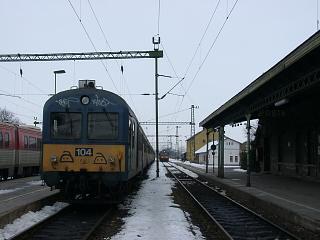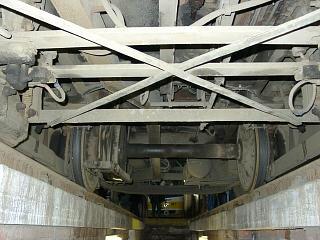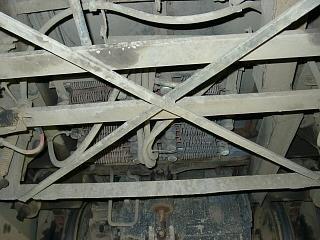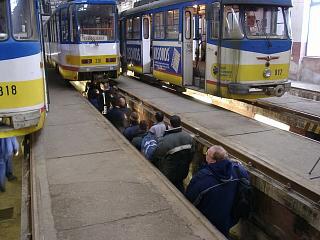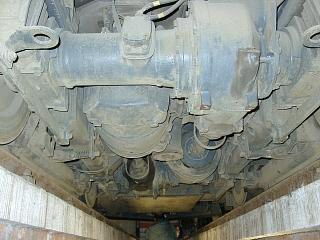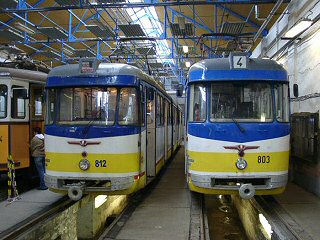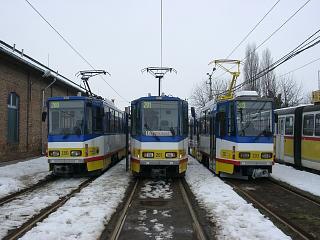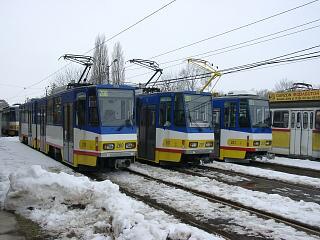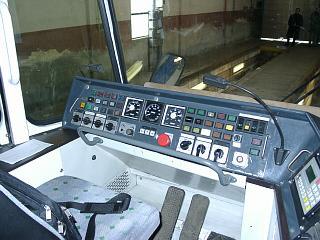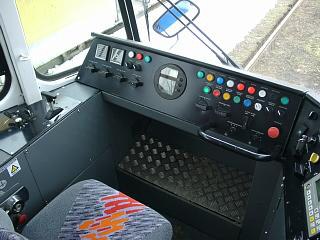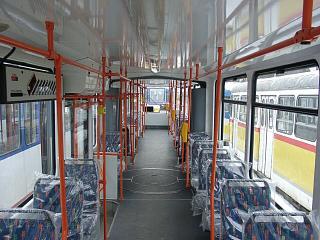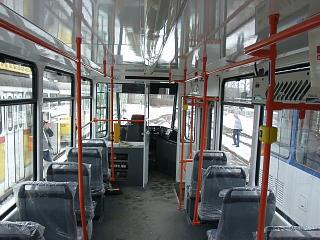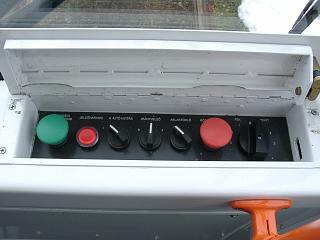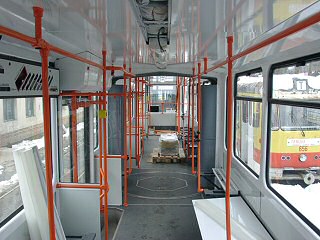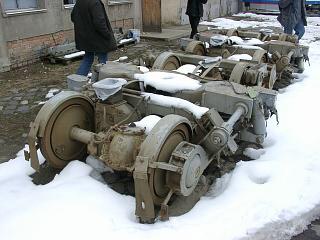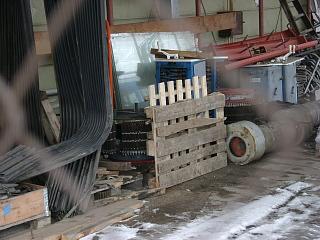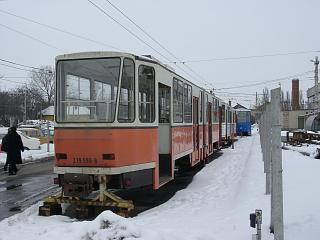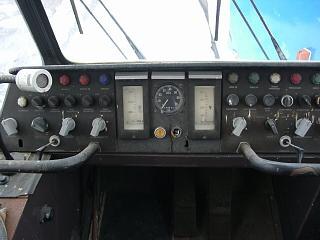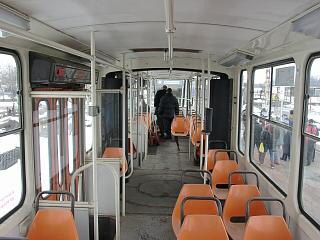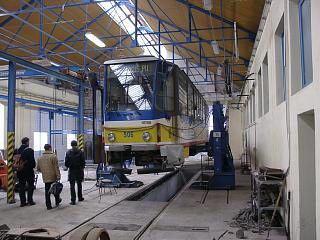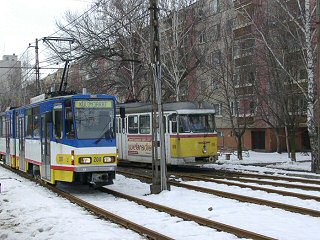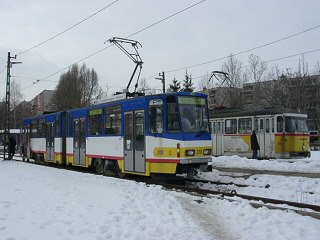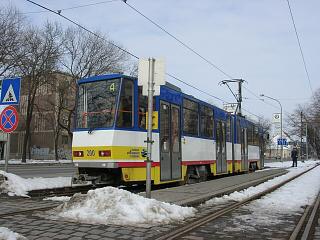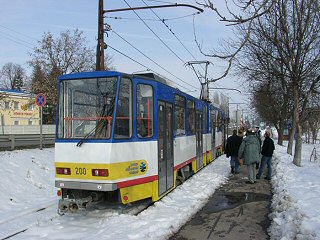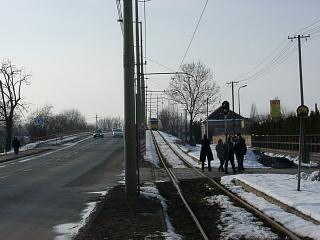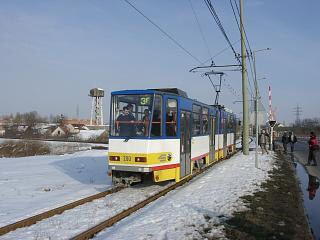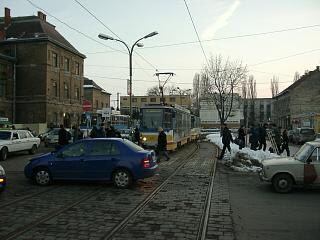20. February 2005.
I've been visiting Szeged in Southern Hungary surprisingly "often" during the last months. This of course has a reason: the city seems to be on its way up concerning public transportation. Track renewals with shared tram/bus lanes, "new" (used) vehicles and a new trolley bus service - this is very joyful after long years of stagnation!
When you arrive to Szeged by train, you'll see an overused and neglected train station. The situation is pretty much the same with the whole city: back, when the neighbouring parts of Serbia belonged to the Hungarian Monarchy, Szeged was an important traffic and trading node. It has been regarded as a blind alley afterwards though, especially after the railway bridge was destroyed in WW2. Unfortunately the whole city was treated as sort of an unloved stepchild then. Hopefully this will change in the future!
But back to trams: we first went to the tram depot at the other end of tram route 1. Most of the people went for the KT4 cars...
... while I chose to observe this old "Bengáli"...
... from underneath. Note the resistors without the covering sheets - the shielding was of course only removed because of reparatures going on.
Queuing under the KT4.
The trucks of the KT4 were refurbished by DWA Bautzen back when it ran in Potsdam.
These bars make the "short articulation" of this type (a technology often referred to as "Kurzgelenkwagen") work.
The Bengáli on the left-hand side was built in 1964 in (and for) Budapest, while the other in 1973 in Debrecen. How many differences can you spot on their "forehead"? :)
Entry of the champions: the cars 200 and 201 were refurbished here, number 203 was modernised in Prague. The first two retained their PCC accelerators, while the third one features a chopper now.
The same three cars again.
Number 200 still has the original dashboard (along the classic pedal control for the accelerator)...
... while the modernised cars have a "joystick" and a more ergonomic instrument panel.
The interior...
... of a modernised car.
The reversing control panel.
Under construction.
These meter-gauge Tatra bogies belong to the KT4's bought from Cottbus. The cars themselves are in Prague right now, undergoing a modernisation - unfortunately they won't receive a new low-floor middle part, as it was originally planned.
I spotted two PCC accelerator "drums" among this heap of spare parts. Can you find them on this picture? :)
These ex-Berlin KT4's were bought from a german company who have been doing reparatures for the Berlin transit operator. They retained their old livery and looks.
The dashboard...
... and interior of one of the ex-Berlin cars.
Tatra T6A2H in the air.
After visiting the tram depot, we rode all tram lines with one of the KT4's.
Here we are at Tarján, joint terminus of route 3/3F and 4.
Because there's no reversing loop or triangle at Tarján (yet!), we were forced to go retrogade...
... for the rest of the route...
... until we reached the other terminus on the one-track section to Kecskés.
We also rode the other one-track line, route 3F...
... which has a level crossing with the state railways. Here's our KT4 crossing the "big railway" tracks in reverse!
At the end of the day we witnessed the typical peak traffic at the main train station: the Tatra T6A2H double-sets are gladly welcomed when the late evening trains arrive! Running two-car sets is a relatively new thing - earlier they simply sent out Bengális in order to cater the traffic.
And that's the end for now :)
